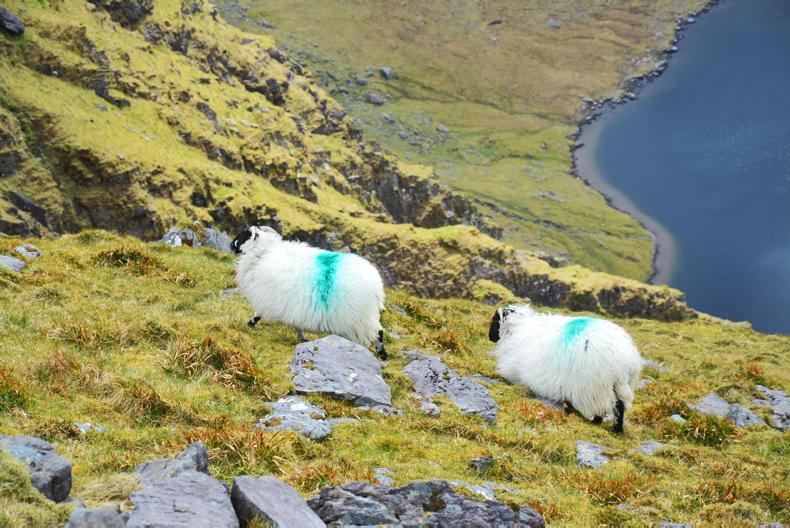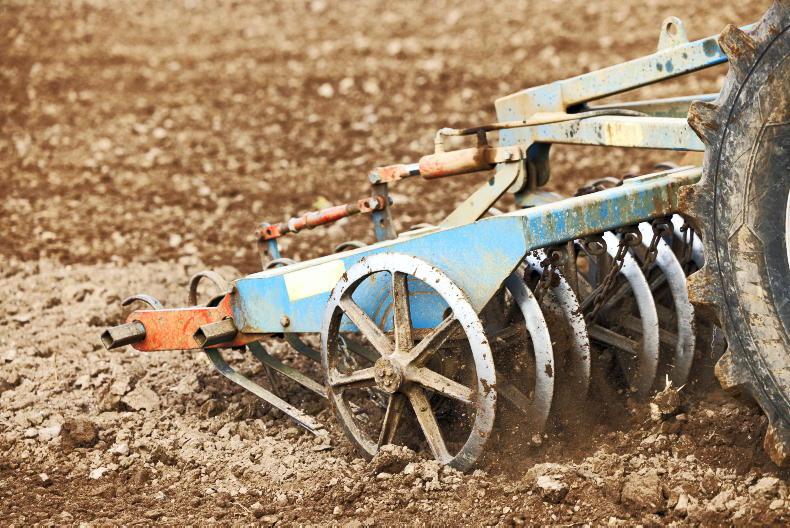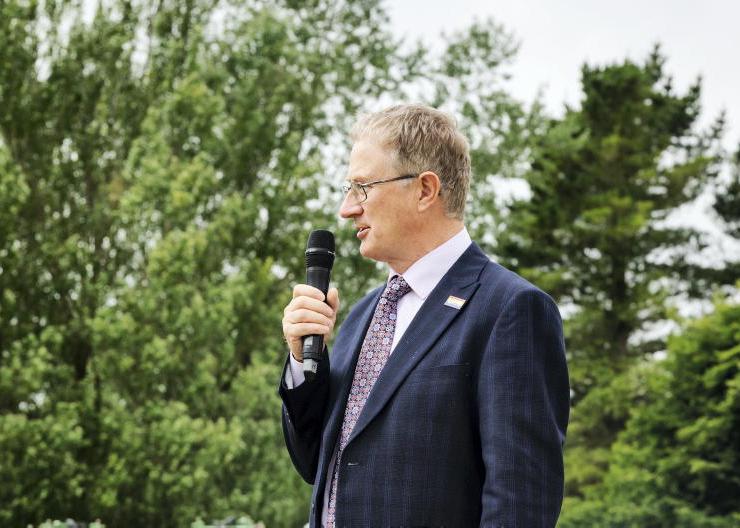In 2019, over 95,000 farmers are due to receive €250m through the Areas of Natural Constraint (ANC) Scheme.
The scheme underwent two main changes this year, namely a review of the townlands eligible for inclusion and payment rates.
As a result of that review, more than 2,000 extra townlands have been entered into the scheme for 2019. However, around 700 townlands will be taken out of the scheme, affecting around 760 farmers. An opportunity to appeal was given to these farmers.
It is important to note that if you have an appeal in process during the BPS/ANC application period, you can still make your application for the 2019 ANC Scheme in the normal way.
Even if you are not planning on appealing the exclusion, you should still apply, because there is a phasing-out period for ANC farmers.
A phasing-out payment in 2019 (80%) and 2020 (40%) will be made to help ease the financial impact, according to the Department.
Payment rates
The 2019 scheme will see payment rates increase for remaining ANC farmers (see Table 1).
The highest rate for the mountain-type grazing land, renamed Category 1, is to increase by €13/ha to €148/ha and apply to the first 12ha, instead of 10ha previously.
More severely handicapped land, now called Category 2, sees the introduction of a higher rate of €111/ha (up €7/ha) on the first 10ha.
Less severely handicapped land (now Category 3), which includes newly eligible land, has a new €93/ha rate (up €4.75/ha) on the first 8ha. Rates on the remainder of eligible land are to stay unchanged.
This brings the maximum payment to €4,240 in Category 1 (up €202), €3,190 in Category 2 (up €70) and €2,685.50 in Category 3 (up €38).
Stocking rate
Maintaining the minimum stocking rates set out by the Department is the main requirement to secure the ANC payment if your land qualifies for the scheme.
Only certain types of livestock are eligible for consideration, providing the relevant eligibility criteria are met; cattle, sheep, goats, horses, donkeys and/or deer.
The Department calculates the average stocking rate by analysing the number of animals in your herd or flock each month. This is used to assess adherence to the retention period, with the cumulative stocking rate used to calculate the yearly average.
Applicants must have an average minimum stocking density of 0.15LU/ha over the calendar year and a minimum stocking rate of 0.15LU/ha must be maintained for a retention period of seven consecutive months within the calendar year.
Examples of seven-month periods are (inclusive):
1 January to 31 July.15 February to 14 September.20 April to 19 November.19 May to 18 December.Table 2 shows an outline of the minimum number of livestock that must be kept over seven consecutive months in order to have an average annual stocking rate of 0.26 LU per forage hectare.
The livestock unit value will depend on the type and age of the stock. However, it is important to know that all sheep and lambs have the same stocking value of 0.15 LU.
Where horses or donkeys are kept on the farm, an equine passport in the name of the farmer is required. Legally, all equines are also required to be chipped and registered with the Department of Agriculture.
New entrants
For new entrants, where the allocation of a herd number is delayed beyond 1 June 2019, the stocking density requirements will be calculated on a pro-rata basis from the date of allocation up to and including 31 December 2019.
However, applicants are required to meet the minimum required stocking density within 10 working days of receiving their herd number.
Donkeys
From 2020, donkeys will only be allowed to fulfil 50% of the stocking density required under the ANC Scheme.
Farmers will be required to use other livestock to fulfil the other 50% requirement. Currently, donkeys qualify at 1 LU/ha.
In 2019, over 95,000 farmers are due to receive €250m through the Areas of Natural Constraint (ANC) Scheme.
The scheme underwent two main changes this year, namely a review of the townlands eligible for inclusion and payment rates.
As a result of that review, more than 2,000 extra townlands have been entered into the scheme for 2019. However, around 700 townlands will be taken out of the scheme, affecting around 760 farmers. An opportunity to appeal was given to these farmers.
It is important to note that if you have an appeal in process during the BPS/ANC application period, you can still make your application for the 2019 ANC Scheme in the normal way.
Even if you are not planning on appealing the exclusion, you should still apply, because there is a phasing-out period for ANC farmers.
A phasing-out payment in 2019 (80%) and 2020 (40%) will be made to help ease the financial impact, according to the Department.
Payment rates
The 2019 scheme will see payment rates increase for remaining ANC farmers (see Table 1).
The highest rate for the mountain-type grazing land, renamed Category 1, is to increase by €13/ha to €148/ha and apply to the first 12ha, instead of 10ha previously.
More severely handicapped land, now called Category 2, sees the introduction of a higher rate of €111/ha (up €7/ha) on the first 10ha.
Less severely handicapped land (now Category 3), which includes newly eligible land, has a new €93/ha rate (up €4.75/ha) on the first 8ha. Rates on the remainder of eligible land are to stay unchanged.
This brings the maximum payment to €4,240 in Category 1 (up €202), €3,190 in Category 2 (up €70) and €2,685.50 in Category 3 (up €38).
Stocking rate
Maintaining the minimum stocking rates set out by the Department is the main requirement to secure the ANC payment if your land qualifies for the scheme.
Only certain types of livestock are eligible for consideration, providing the relevant eligibility criteria are met; cattle, sheep, goats, horses, donkeys and/or deer.
The Department calculates the average stocking rate by analysing the number of animals in your herd or flock each month. This is used to assess adherence to the retention period, with the cumulative stocking rate used to calculate the yearly average.
Applicants must have an average minimum stocking density of 0.15LU/ha over the calendar year and a minimum stocking rate of 0.15LU/ha must be maintained for a retention period of seven consecutive months within the calendar year.
Examples of seven-month periods are (inclusive):
1 January to 31 July.15 February to 14 September.20 April to 19 November.19 May to 18 December.Table 2 shows an outline of the minimum number of livestock that must be kept over seven consecutive months in order to have an average annual stocking rate of 0.26 LU per forage hectare.
The livestock unit value will depend on the type and age of the stock. However, it is important to know that all sheep and lambs have the same stocking value of 0.15 LU.
Where horses or donkeys are kept on the farm, an equine passport in the name of the farmer is required. Legally, all equines are also required to be chipped and registered with the Department of Agriculture.
New entrants
For new entrants, where the allocation of a herd number is delayed beyond 1 June 2019, the stocking density requirements will be calculated on a pro-rata basis from the date of allocation up to and including 31 December 2019.
However, applicants are required to meet the minimum required stocking density within 10 working days of receiving their herd number.
Donkeys
From 2020, donkeys will only be allowed to fulfil 50% of the stocking density required under the ANC Scheme.
Farmers will be required to use other livestock to fulfil the other 50% requirement. Currently, donkeys qualify at 1 LU/ha.









SHARING OPTIONS